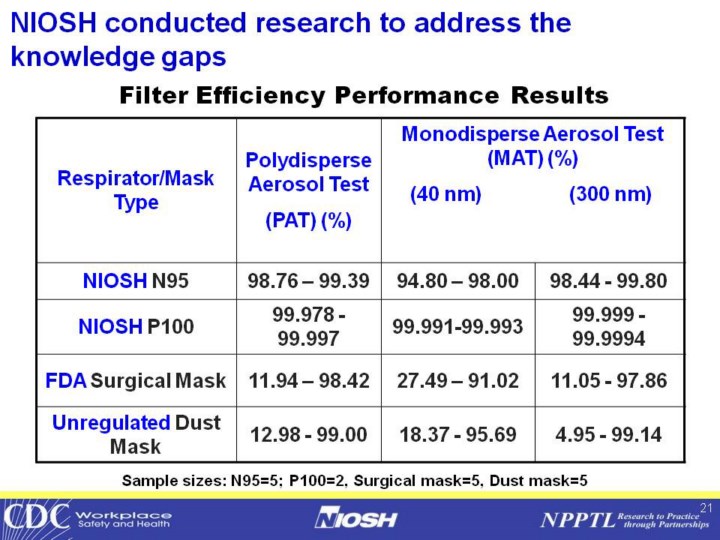| front |1 |2 |3 |4 |5 |6 |7 |8 |9 |10 |11 |12 |13 |14 |15 |16 |17 |18 |19 |20 |21 |22 |23 |24 |25 |26 |27 |28 |29 |30 |31 |32 |33 |34 |35 |36 |37 |38 |review |
 |
Myth: Just because a mask does not say "NIOSH" on it, doesn't mean it's not protecting the user. Fact: The test results shown in this chart mark the differences between NIOSH-approved respirators and other facemask personal protective equipment on the market.
This chart reflects research done by NIOSH and depicts the efficiency of NIOSH-approved respirators such as the N95 and the even more efficient P100. The Polydisperse Aerosol Test column is the actual test conditions used by NIOSH during the certification process. The high volume of air (the high flow rate) uses a most penetrating size particle. NIOSH tests the filter to a loading of 200 mg, which is a significant load for an occupational exposure. An N95 respirator cannot fall below 95% efficiency during this test. Similarly, a P100 respirator cannot fall below 99.9% efficiency throughout the test. The results here show that the NIOSH-approved filters did perform as expected. As stated before, the surgical mask is designed for larger particles (such as droplets), but is not designed for aerosol particles. The surgical masks here had a range of efficiency from about 12% efficient to a high efficiency rate of 98.2. It is impossible for a user to determine where a surgical mask falls within this range. The unregulated dust mask performed similarly to a surgical mask. Again, a problem arises because the user cannot determine where any given dust mask falls within this range.
|